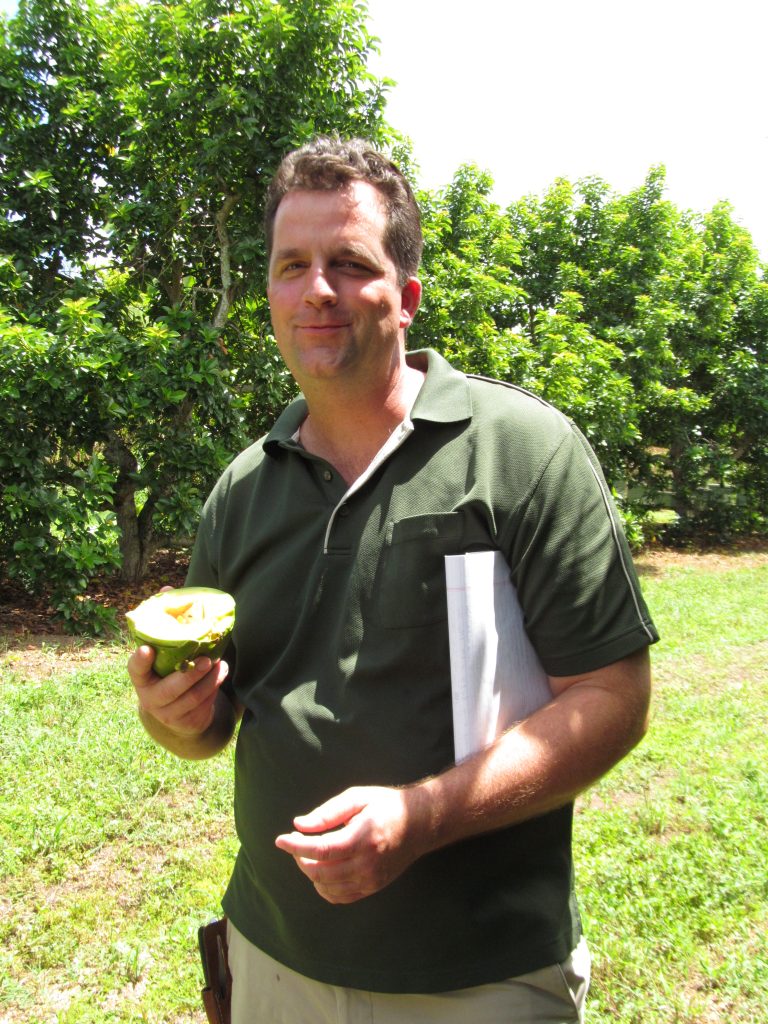With Cinco de Mayo approaching, now’s the time to dig into guacamole and even plant the tree that produces it. Florida avocados offer a fresh, tropical twist on this fan-favorite fruit that stars in so many recipes.

Did you know Florida avocados have less fat than the popular Hass variety, making them the lean, green star of your fiesta spread? With 60% more potassium than bananas, they bring a nutritional punch to every bite.
Florida has been home to avocado trees since 1833, and today it ranks as the N0. 2 avocado-producing state in the nation.
Jeff Wasielewski is a commercial tropical fruit agent at UF/IFAS Extension Miami-Dade County who provides the latest research to growers and the public on avocados and more.
To help Floridians enjoy the fruit in their own backyard, Wasielewski explains the science behind successful avocado growing in the home landscape.
Q: What makes Florida avocados different from Hass avocados?
A: Florida avocados are usually three times larger than the Hass avocados and they have less fat. The most important characteristic of our avocados versus the Hass is that we can grow them in our backyards. The Hass cannot be successfully grown in Florida.
Q: Where can you grow Florida avocados?
A: As winters in Florida become warmer, there is more and more interest in growing avocados farther up the state than in South Florida, where they grow in abundance. I spoke to a group from Polk County and some of them were growing avocados that have fruited in the past. It is possible to grow some of the sub-tropical fruits like avocados and mangos farther up the state, but one must always remember that it only takes one freeze to do severe damage, or even cause death, to your avocado tree. Those thinking of growing avocados commercially in cooler areas need to be prepared with a cold protection scheme to make sure the trees are not damaged beyond repair.
Q: How much space does a Florida avocado tree need?
A: You should give your trees plenty of space. I would say 15 by 15 feet at the minimum. Also, make sure the tree gets as much sunlight as possible. Don’t plant them near the north side of your house as this area will get the most shade.
Q: How often should I water a young avocado tree?
A: This answer is not a one-size fits-all, as the amount and timing of the watering changes based on the time of year and the drainage of the soil. The key is to make sure the tree gets enough water that it does not wilt. If you see your tree wilting, make sure it gets watered right away. I would employ the finger test; that is, you put your finger in the soil around the tree. If it is wet, you don’t need to water. If it is dry, you should water. You should also try to time the planting of your new tree to when the rainy season starts. In South Florida, that happens right around the end of May. If you plant then, Mother Nature will give you a big boost as far as helping to water your new plant.
Q: How long do avocado trees live, and when can I expect fruit?
A: Avocado trees can live a very long time, and we have some at the UF/IFAS Tropical Research and Education Center that are at least 80 years old. If your tree is grafted and not from seed, you can expect fruit as soon as the tree is large enough to hold fruit, which is usually in year three.
Q: Have avocado trees shown to be hardy enough to survive hurricanes?
A: If you get a category 4 or 5 hurricane, all bets are off, but avocados are a relatively strong wood and by keeping them pruned, you have a pretty good chance of survival.
Q: Are there pests and diseases I should be concerned about and are there prevention methods one can follow in early stages of growing?
A: If we are going to talk about avocados, we need to mention a fatal disease called laurel wilt. This is a fungus carried from tree to tree by a tiny ambrosia beetle. The fungus is deposited into the portion of the tree that moves water to the leaves. This area becomes blocked and causes the tree to rapidly wilt and die. Although there is no silver bullet for laurel wilt, we have studies that show that opening up the tree to light through pruning significantly cuts down the number of beetles in that area. The beetles do not like too much sunlight.









